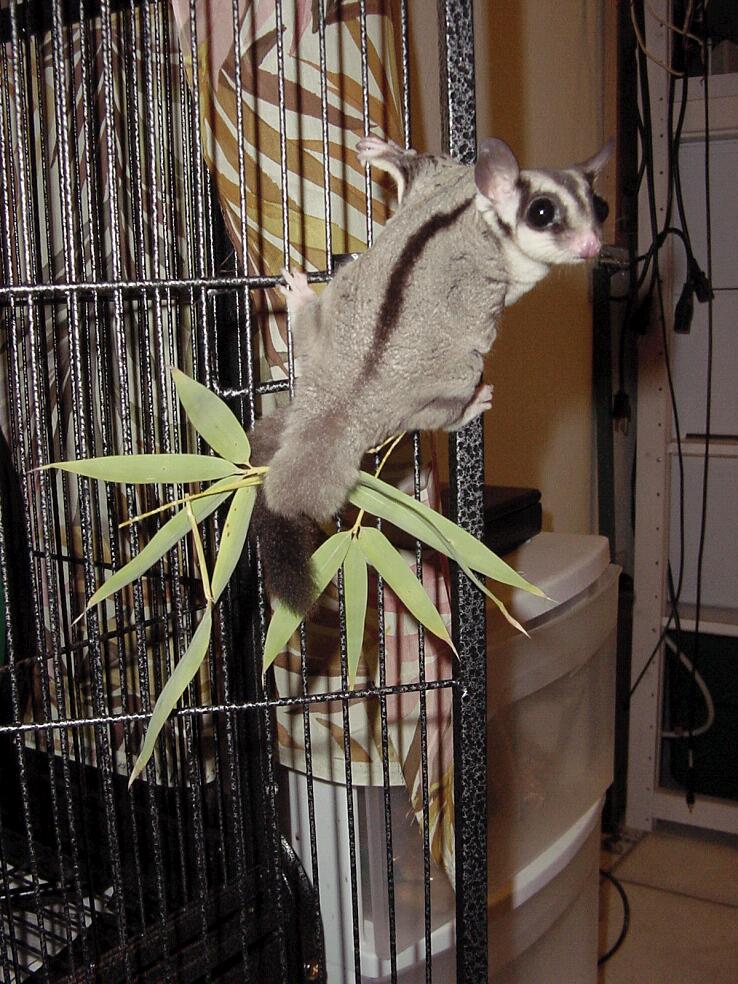 |
Bamboo in tail |
It is important to find plants that have not had any toxic commercial pesticides applied. In lieu of pestacides a grower might spot treat for insects by using Dawn dish detergent mixed with water. There are other commercial safe and green products available, but Dawn is very effective against any soft bodied insect.
Some states may require pestacide treatment for Japanese beetle or other insects. You may want to ask and research this concept with your seller.
Some of the species of Australia plants that have been claimed as acceptable for sugar gliders:
- Eucalyptus globulus (aka Blue Gum)
- Eucalyptus pilularis (aka blackbutt)
- Eucalyptus pyrocarpa (aka blackbutt)
- Acacia mearnsii (aka A. mollissima - Black wattle)
- Banksia integrifolia (also known as Coast banksia)
- Banksia serrata (aka Saw banksia)
- Corymbia erythrophloia (aka red bloodwood)
- Corymbia ficifolia (aka Scarlet flowered gum, red bloodwood)
- Corymbia gummifera (aka red bloodwood)
This local foliage reference is from Dr. Stephen Jackson, Melbourne Zoo, in an email dated 3/8/01:
- All species of:
- Acacia (for the sap)
- Banksia, Callistemon, Corymbia, Eucalyptus, Melaleuca (for nectar or pollen)
- So basically, this would include any species, subspecies, etc. of the above items.
Eucalyptus: Eucalyptus globulus
Wood, leaves and flowers. The sap of the eucalyptus is a mainstay of the wild sugar glider diet. Wild gliders build their homes in eucalyptus trees, and your sugar glider will probably want to nest with the leaves. It is important to point out that sugar gliders are not eucalyptus eaters. They will not eat the leaves. They may however pluck them off, carry them in their tail and make nest out of them, and the leaves in the nest act as a natural deterrent for parasites. Sugar gliders in the wild also strip the bark of these trees into long strips and often take it back to the best too. This behavior helps to keep the teeth in good condition.Eucalyptus trees (eucalyptus globulus aka Blue Gums) all-natural and have never been sprayed, contaminated or altered.
http://eucproducts.com/
More Information
DIETFOOD
More Questions
- Find related pages in Category Question.